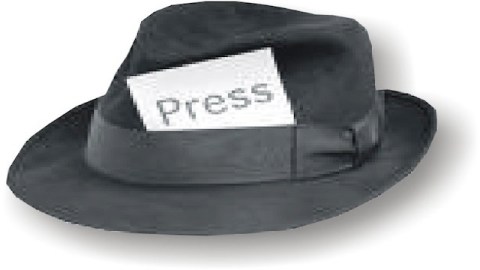Science Is to Journalism As a Fish Is to a Bicycle

At The Guardian site, Martin Robbins has nailed everything that’s wrong with science news on “general interest” websites in this pitch-perfect parody. It gets at the heart of the uneasy marriage between science and newspaper journalism.
Mediocrity, timidity and stupidity are some of Robbins’ targets, as they are for any satirist (“to pad out this section,” runs his generic news article, “I will include a variety of inane facts about the subject of the research that I gathered by Googling the topic and reading the Wikipedia article that appeared as the first link”). More interestingly, though, much of the shabbiness he mocks would not be cured by harder, better work. This is because the industry’s standards for “good journalism” aren’t compatible with the standards of good science.
Newspaper journalism, and its Web descendant, presumes a simple epistemology: there are facts; the reporter finds those facts; the reporter presents them. The reader has no trouble understanding the report, because we all know the world in the same way, using the same methods.
Scientific research depends on a less naive view of reality: there are theories, according to which we know, with x degree of confidence, certain facts. A research paper may offer new facts; or increase our confidence that already-known facts really are facts; or overturn the framework of theory, in which case yesterday’s facts become today’s “myths they used to believe.” For example, in the 1970s, the brontosaurus of my childhood became apatosaurus, and museums where its skeleton was on display replaced its skull with a different looking one. Ether, a substance that pervaded the universe in the 19th century is now no more. The miasma theory of disease, which drove cities to build sewers, collect garbage and clean their streets, gave way a century ago to the germ theory.
So the perfect newspaper story focusses on what we know. The perfect journal article focusses on how we know. The bulk of that article—methods used, what data they generated, how and why that data was interpreted to mean that some fact is to some extent likely to be true—is exactly what newspaper epistemology ignores. Because the unstated philosophy of newspaper reporting is that we all perceive the same facts, with the same method (eyes, ears, common sense). Undermining that assumption undermines the reader’s reason to read the news, so a news story can’t do it.
That’s why the news is filled with a mix of ridiculous, pointless precision (“Lindsay Lohan was booked at 10:35 A.M.”) and empty pronouncements that sound authoritative (“it remains uncertain whether the economy will experience slow growth or fall back into recession”). This twaddle reassures the reader that the world is comprehensible, that important facts are known, or will soon be known—because everything is knowable. In this world the greatest sin, the most unprofessional of acts, is to disturb this illusion of perfect understanding. You can’t tell your audience that nobody knows what the hell will happen next in this economy, so you say, instead, that the economy’s fate “remains uncertain.” To any normal human you’ll sound like a fatuous ass, but within the newsroom you’ll be seen as a real pro.
Add to this the editors who care nothing about ideas (Robbins: “in this paragraph I will reference or quote some minor celebrity, historical figure, eccentric, or a group of sufferers; because my editors are ideologically committed to the idea that all news stories need a “human interest”, and I’m not convinced that the scientists are interesting enough”). Also the conventions of our trade in 2010, which decree that all writing must be accompanied by bright and shiny objects (“At this point I will include a picture, because our search engine optimization experts have determined that humans are incapable of reading more than 400 words without one”).
That mix gives you the hurried mediocrity that Robbins mocks, in which journalists , forced to pretend that they only report simple “facts,” fall back on the “fact” that, as Robbins writes, “while some scientists believe one thing to be true, other people believe another, different thing to be true.” His lead paragraph captures the vacuity of all this: “In this paragraph I will state the main claim that the research makes, making appropriate use of ‘scare quotes’ to ensure that it’s clear that I have no opinion about this research whatsoever.”
Readers wouldn’t put up with sports news that reported scores and quoted coaches without saying what the game was, or how it was played. Yet a lot of “general interest” science news is as Robbins describes it. That’s not because reporters are dumb and unprofessional; it’s because they’re smart and quite professional.




